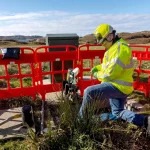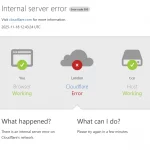Altnet ISP Zzoomm Proposes Changes to Deliver a Full Fibre UK by 2025
Oxford-based ISP Zzoomm, which hopes to cover 1 million homes with a 10Gbps capable Fibre-to-the-Premises (FTTP) broadband network by the end of 2024 (here), has proposed a series of changes that new PM Boris Johnson could make to help achieve universal “full fibre” coverage of the UK by 2025.
At the time of writing Boris Johnson has only just taken office and thus it’s probably a bit too soon to expect much in the way of any solid detail on how he intends to deliver upon his pledge to have “fantastic full fibre broadband sprouting in every household” by 2025 (we haven’t yet heard the seemingly unachievable 2025 date repeated since he took office).
As usual there’s a lot of speculation about watering down the definition of “full fibre” (to include Virgin Media) or “premises passed“, making significant market changes, ploughing huge sums of public money into the project and so forth. At present nobody really knows (except Boris, hopefully..) but no matter what route he takes, 2025 still looks a bit on the unachievable side.
Advertisement
In the meantime new start-up Zzoomm, which has yet to begin its own rollout (here), has proposed a few changes of its own. “We will need to make this a national priority just as we did in the 19th Century during the development of the UK’s railway infrastructure,” said the ISP.
According to ZZoomm, the successful delivery “requires tough decisions and willingness to tolerate the temporary suspension of certain rights related to property, planning and access.” If this is done then the provider believes that we could be passing c.4 million premises per year. We think they’d need to be closer to c.5 million when allowing time for policy creation and remember, that has to be sustained in rural areas too (not so easy).
However the provider also warns that all of this needs to happen “immediately,” which probably isn’t realistic for all of the required changes. The wheels of democratic government simply do not turn that fast.
Zzoomm’s Proposals
As a country, we need to amend or suspend regulations and bylaws that are designed to provide checks and balances to new infrastructure build, and as a result slow down and increase the cost of that build. And in parallel, we must remove any barrier that delays or prevents consumers switching to full fibre broadband at pace.
* Suspend planning law
Full fibre build no longer requires public consultation or negotiation with planning authorities over the location or size of equipment.* Suspend highways law
Modern construction techniques such as narrow trenching, on site recycling and liquid reinstatement must be permitted.Permits and notices are not charged and granted automatically. Fines are not applied. Section 58 and other notices that restrict access to work in the highways are disregarded. All works can commence following a 7 day notice. Road closure procedures accelerated to 7 day notice for closures of less than 24 hours. No limits, formal or informal, on the number of gangs operating in any specific location.
* Suspend private property law
Automatic right of access to all properties to deliver full fibre into the residential or business property. Automatic grant of wayleaves over private land for infrastructure with no lasting visual impact for a standard, national rate card payment to the landowner by land type.* Suspend immigration restrictions for full fibre labour
Ensure easy access to full fibre construction workforce through simple work visa processes irrespective of worker’s nationality. Provide support to operator and contractor led training schemes to build in the UK full fibre skills and expertise.* Change broadband advertising rules and empower consumers
Clear advertising and communication so that consumers can easily identify and switch to full fibre broadband services compared to other technological solutions. Remove all barriers that delay or prevent migration from copper-based broadband to full fibre broadband.
Interestingly Zzoomm doesn’t mention the need to extend the business rates holiday beyond its current 5 year run (like Scotland has already done), although that’s probably just an oversight on their part. In reality there are quite a few other things that may need to be considered but we’ll wait to see what the new Government proposes before digging into those.
Advertisement
The ISP also suggested that around £20bn may be needed and the “vast majority” of this should come from “private investors,” although it’s unclear how many investors would be willing to throw billions to connect up those in the final 30-40% of premises that are traditionally much slower and more expensive to reach.
We should say that private investment is already in the process of funding the first c.50% of premises, although it’s hard to be precise due to the ever uncertain element of overbuild between rival operators.
Zzoom Statement
To unlock private capital quickly, the Government should provide medium term regulatory certainty and support with access to low cost long-term debt financing early in the construction phase.
In addition, we must foster an environment of collaboration between full fibre builders and local authorities to resolve issues on the ground quickly. As well as between competing full fibre builders to limit inefficient overbuild of networks that risk some properties suffering disruption from multiple full fibre builds in the same streets at the cost of substantial delays to full fibre upgrades in other areas.
Changes to our regulations and bylaws, along with greater collaboration, will enable operators to deliver high quality fibre infrastructure rapidly and encourage consumers to switch to full fibre broadband services.
If these measures are implemented in early 2020, we can achieve national full fibre by 2025 and enjoy the economic prosperity and competitiveness that full connectivity will bring across the UK.
Fostering collaboration between competitive full fibre builders is a nice thing to say but in reality tends to be like herding cats, due to all of the competing interests involved, although we salute Zzoomm for putting some actual ideas down on paper.
Sadly you can’t rush complicated changes to laws and regulation, particularly when Brexit is likely to be Boris’s focus for the next few months and some believe he may not even survive until 2020. In that sense Boris can probably get away with promising the moon on a stick right now.
Advertisement
Mark is a professional technology writer, IT consultant and computer engineer from Dorset (England), he also founded ISPreview in 1999 and enjoys analysing the latest telecoms and broadband developments. Find me on X (Twitter), Mastodon, Facebook, BlueSky, Threads.net and Linkedin.
« Northern Ireland’s £165m Broadband Plan to Help 98000 Premises

















































Comments are closed